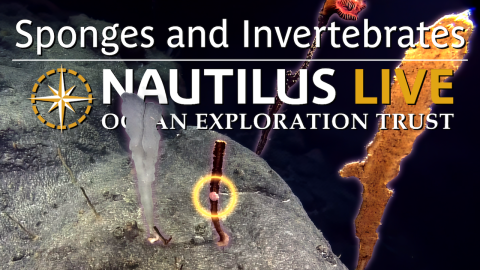Deep-Sea Hydrozoans of the Burke Vent Field
During NA171, the Corps of Exploration returned to explore the Burke Vent Field in the Mariana back arc, one of the first hydrothermal vent sites discovered in the Mariana region. While there, we saw some uniquely diverse relatives in the invertebrate Hydrozoan class living over 12,000 feet (3,600 m) deep. The tube-shaped hydroid from the class Candelabridae, was first seen on a 2016 NOAA expedition, but has not been described with any more detail since! It's rounder relative, a “sea dandelion” siphonophore is a colonial hydrozoan with clearly visible tentacles collecting food and anchoring to the seabed. Hydroids are small predators and known for their ability to survive the extreme habitats of vent sites which can experience temperatures as high as 290°C.
The Mattingan: Mariana Arc Volcanic Exploration (NA171) expedition is exploring deep-sea areas identified by the local management and science community, including sites with signatures of active volcanism, abyssal plain habitats, and areas in and around the Monument where new data can support resource management priorities. This expedition is supported by NOAA Ocean Exploration, the Bureau of Ocean Energy Management, and the US Geological Survey via the Ocean Exploration Cooperative Institute.

Mattingan: Mariana Arc Volcanic Exploration
E/V Nautilus will begin the 2025 season exploring the ocean of the Mariana Islands- one of the most tectonically and volcanically dynamic locations on the planet. This area is home to one of the most active arc volcanic systems on Earth with more than 60 submarine volcanoes, and a back-arc spreading center where new seafloor is created.



